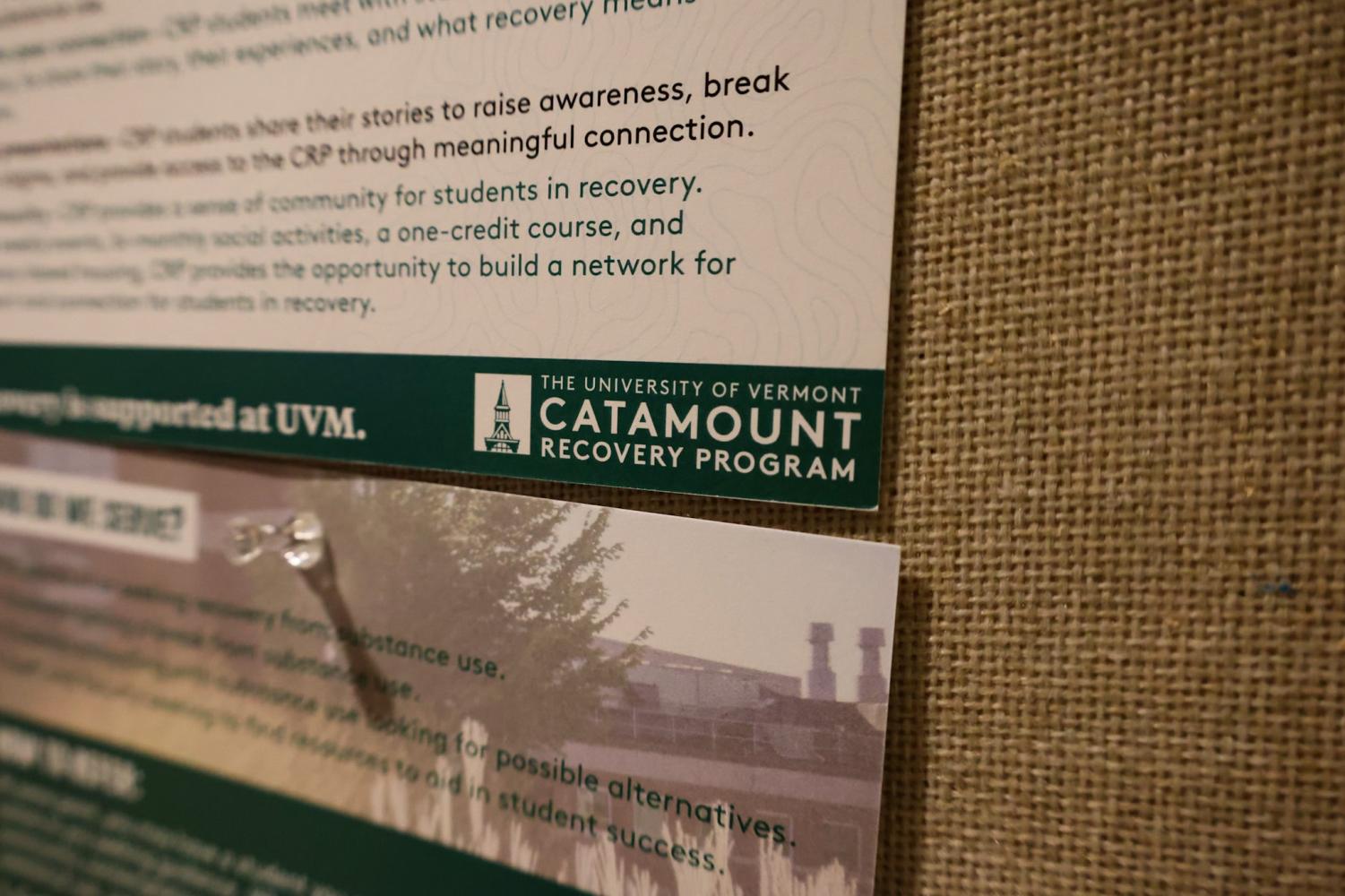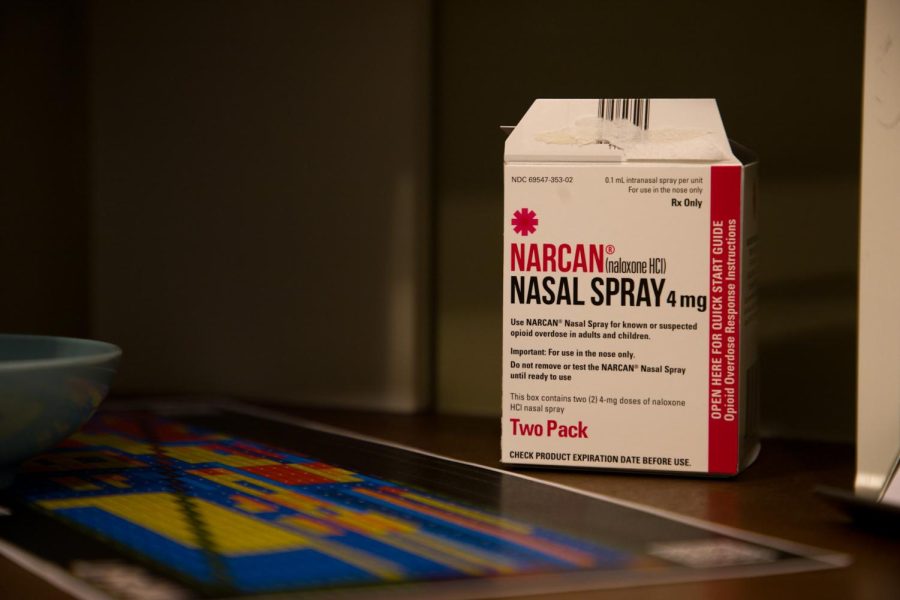Narcan nasal spray, which can be found in the harm reduction corner of Living Well April 19.
UVM’s harm reduction resources
April 27, 2023
In a college setting, obtaining drugs is possible for those who desire them. While completely preventing usage is unrealistic, harm reduction tactics save lives.
In order to keep the student body safe, UVM’s Psychedelics Science Club has stepped up alongside Living Well to provide educational resources.
“On a fundamental level, [harm reduction] just saves lives and keeps people safe,” said junior Jared Thatcher, a club officer of the Psychedelics [Science] Club. “It’s good to have that as the focus of the club to have a positive impact on the community.”
One resource of the Psychedelics Science Club is handing out Narcan and fentanyl testing strips in the Davis Center, Thatcher said.
Narcan reverses the effects of an opioid overdose, and fentanyl testing strips are available so that students can check if their drugs have been laced with fentanyl.
Junior Micah Bernat, president and co-founder of the Psychedelics Science Club, said the group will be using some of their fundraised money to buy more testing kits for people to utilize.
“A good comparison that people usually draw is abstinence education versus actual good, proper sex education,” Thatcher said. “It’s a similar kind of thing, it’s going to happen. You can’t control people taking drugs—it will happen—but if they know how to use them safely, they can minimize the harm that it’s going to do.”
UVM’s Center For Health and Wellbeing offers the Balancing Alcohol and Substances to Improve College Success program, which aims to help students explore alcohol and drug use in a confidential, supportive environment, according to the UVM website.

Michael Hill Jr., substance misuse prevention specialist and alcohol and other drugs educator, works for UVM’s Center of Health and Wellbeing Education and Outreach unit and works with the BASICS program.
“We provide one-on-one or small groups offering [to talk] about substances with college students, ” Hill said. “Students can set up personal meetings, talking about their perceptions of how they are engaging with substances [and] they can ask me for assistance in figuring out if they’re doing this correctly and safely.”
In addition to helping individuals, Hill works with club sports, and his colleague Tom Fontana, UVM’s alcohol, cannabis and other drugs initiatives manager, does BASICS training with Fraternity and Sorority Life and UVM athletics, he said.
Hill also works with the Catamount Recovery Program, which assists students who are in recovery, considering recovery or taking a break from substance use, according to the UVM website. This program aims to create a community for people to support one another and grow together.
“My primary responsibility is to create opportunities of equitable access and inclusion for students or community members who are not usually the ‘normal’ substance use education program users,” Hill said.
BASICS is run by Fontana, who is a drug and alcohol education and intervention educator and counselor for Living Well.
“Student groups have demanded that we do a better job around sexual assault and the intersection of alcohol, particularly in spiked drinks,” Fontana said. “And so we’re looking at how we can bring testing to students. We have drug kits that we’ve purchased and we’re making a real effort to roll those out.”
Living Well has talked to fraternities, sororities, varsity sports and music houses about hanging up harm reduction resource bags, which they have all been cooperative with, Fontana said.
“We wait until the moment of death when they’ve fallen off a cliff and then we patch them up a little bit,” Fontana said. “We’re the ones to take care of them when they’ve had too many shots, but we’re the ones who gave them the shots. We need to look out for each other before that point.”

There is a harm reduction corner in Living Well that houses free Narcan, fentanyl testing strips, a cross-use information chart and an edible dosing chart, Hill said. They also have 802Quits kits designed for quitting nicotine.
“I think any institution or organization has areas of growth or areas of improvement,” Hill said. “But in comparison to other higher education institutions, I would say that we’re doing a pretty well-rounded job.”
Having harm reduction resources is great, but only if people know how to properly use them, said sophomore Tracy Rosenberg, who works at Living Well.
“I felt like every week when I looked at the news I saw another story of a college student overdosing on fentanyl or dancing with death,” Rosenberg said. “In every interview, the family emphasized learning how to use Narcan and testing your drugs for fentanyl.”
Rosenberg does workshops with fraternities and sororities, teaching them about what to do in the event of an overdose and how to use Narcan. Now, all chapter facilities have four doses of Narcan and fentanyl test strips, Rosenberg said.
In the future, Rosenberg said she wants to expand the resources to UVM’s resident advisor program. Right now, RAs cannot have Narcan given to them from the University due to drug free housing policies, she said.
“I don’t care what people do. I just want people to [use drugs] safely,” Rosenberg said. “There’s no shame in asking for a fentanyl test strip.”
